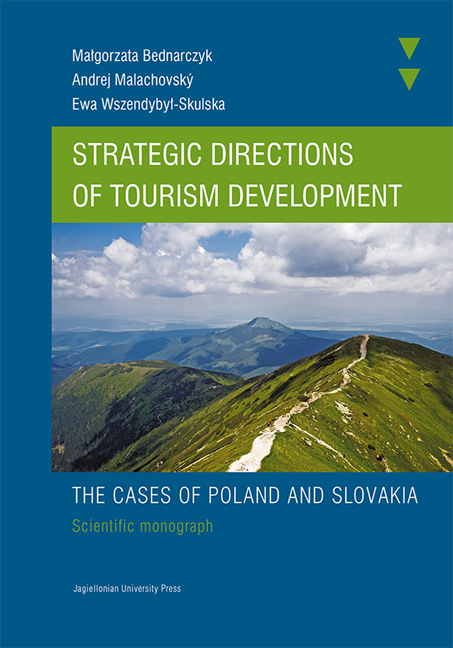Book contents
- Frontmatter
- Contents
- Introduction
- PART I European directions of strategic development of tourism
- PART II Strategic directions for tourism development: a case of Slovakia
- PART III Innovation as a key success factor of the tourism development strategy in Poland
- Conclusions
- References
- List of Figures
- List of Tables
- Appendix
Introduction
Published online by Cambridge University Press: 10 January 2018
- Frontmatter
- Contents
- Introduction
- PART I European directions of strategic development of tourism
- PART II Strategic directions for tourism development: a case of Slovakia
- PART III Innovation as a key success factor of the tourism development strategy in Poland
- Conclusions
- References
- List of Figures
- List of Tables
- Appendix
Summary
Introduction
Tourism has become a significant factor in the global economy development. Removing barriers and world trade liberalization brought economic growth and prosperity. Liberalization is also associated with freedom of movement and travel. Globalization has become a trend of global economy. The effects of globalization in tourism are positive. On one hand, the process leads to strengthening global economic growth. On the other hand, it affects small and medium-sized enterprises. Small and medium-sized enterprises are typical for the tourism sector. Creating a common product and its successful sale to the western European tourism market is an example of effective application of the strategic management instruments in the tourism sector. Short-term development in the tourism sector in Slovakia after the 1990s did not ensure competitiveness. Today, we can confidently say that overcoming the gap in the tourism sector will require radical solutions and significant changes in financing the tourism sector.
Long-term development of the tourism sector in Poland does not mean the stability of competitiveness of the Polish tourism sector in the significantly changing global tourism market. It is necessary to monitor the potential of the sector and to introduce innovations.
Slovakia, in comparison with the Czech Republic, Poland and Hungary, has gained an insufficient income from tourism. The share of tourism in the GDP is comparatively low. Application of strategic management instruments is a successful trend in the tourism sector. The cooperation between private and public sector is a prerequisite for the success of both Slovakia and Poland in the global tourism market.
For many years now Europe has been the most popular destination in the world. In 2010 alone, it was visited by 476.6 m travellers. It does not mean, however, it is unbeatable as for the last twenty years Asian and Pacific countries have become their greatest competitors. In 2010, travelling to theese destinations constituted 22% of the total share of the global market of tourist arrivals and, according to the prognoses by UNWTO, the share is going to reach 30%. Taking these prognoses into account, Europe is taking steps to maintain the top slot as the favored tourist destination worldwide.
- Type
- Chapter
- Information
- Strategic Directions of Tourism DevelopmentThe Cases of Poland and Slovakia - Scientific Monograph, pp. 7 - 10Publisher: Jagiellonian University PressPrint publication year: 2012



